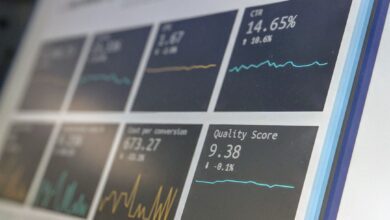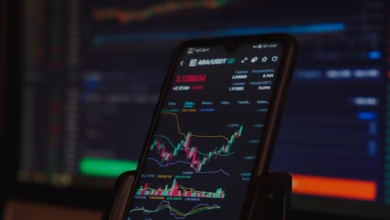High-Frequency Trading Explained: Harnessing Speed and Technology for Effective Trading Strategies

In the fast-paced world of financial markets, high-frequency trading (HFT) stands out as a revolutionary approach that leverages technology and speed to execute trades at lightning-fast rates. With its roots deeply embedded in algorithmic trading, HFT has transformed stock trading, forex trading, options trading, and beyond, allowing traders to capitalize on minute price fluctuations that occur within fractions of a second. As trading strategies evolve, understanding the nuances of HFT becomes essential for anyone engaged in day trading, swing trading, or even crypto trading.
This article delves into the mechanics of high-frequency trading, exploring how traders utilize advanced algorithms and sophisticated technology to implement strategies such as scalping and arbitrage. We will also analyze the significant impact of HFT on market dynamics, including its implications for risk management, trading psychology, and overall market stability. Whether you're a novice trader interested in online trading platforms or an experienced professional navigating the complexities of derivatives trading, this comprehensive guide will equip you with the insights needed to understand and potentially harness the power of high-frequency trading in your own trading endeavors.
- 1. Understanding High-Frequency Trading: The Intersection of Speed and Technology in Algorithmic Trading
- 2. Key Strategies in High-Frequency Trading: From Scalping to Arbitrage and Beyond
- 3. The Impact of High-Frequency Trading on Market Dynamics: Risk Management and Trading Psychology
1. Understanding High-Frequency Trading: The Intersection of Speed and Technology in Algorithmic Trading
High-Frequency Trading (HFT) has emerged as a revolutionary approach in the realm of market transactions, where the intersection of speed and technology plays a crucial role in algorithmic trading. Unlike traditional stock trading that often involves longer holding periods, high-frequency trading leverages sophisticated algorithms to execute thousands of orders in fractions of a second. This rapid execution enables traders to capitalize on small price discrepancies across various markets, making it a popular strategy in forex trading, options trading, and even crypto trading.
The heart of HFT lies in its reliance on advanced technology and data analytics. Traders utilize high-speed internet connections and powerful computing resources to analyze vast amounts of market data. This allows them to implement trading strategies such as scalping or arbitrage trading, where the goal is to make quick profits from minor price changes. In particular, algorithmic trading systems are designed to react instantly to market conditions, making them indispensable for day trading and swing trading strategies.
Moreover, the integration of risk management techniques is vital in high-frequency trading. Traders must continuously assess their exposure and market volatility to protect their capital effectively. This requires a blend of technical analysis and fundamental analysis to gauge the overall market sentiment and make informed decisions. For instance, while technical analysis might focus on price patterns and indicators, fundamental analysis could provide insights into economic indicators that affect trading outcomes.
As trading psychology plays a significant role in decision-making, HFT traders must maintain a discipline that allows them to execute trades without emotional interference. The pressure of margin trading and leverage trading in high-stakes environments can lead to impulsive decisions unless traders adhere strictly to their predefined trading strategies.
In conclusion, the convergence of speed and technology in high-frequency trading has transformed the landscape of online trading platforms, making it essential for traders to stay ahead of the curve. By understanding the intricacies of HFT and leveraging appropriate trading strategies, traders can harness the potential of high-frequency trading to enhance their trading performance across various assets, including commodities trading, index trading, and derivatives trading.
2. Key Strategies in High-Frequency Trading: From Scalping to Arbitrage and Beyond
High-Frequency Trading (HFT) employs a variety of strategies that capitalize on technological advantages and speed to execute trades at a rapid pace. Among these strategies, scalping and arbitrage are two of the most prevalent, each suited to different market conditions and trading styles.
Scalping involves making numerous trades over a short period, aiming to profit from small price movements. This strategy is common in forex trading and stock trading, where traders can leverage online trading platforms to quickly enter and exit positions. Scalpers often rely on technical analysis to identify entry and exit points, using tools like moving averages and price action patterns. The key to successful scalping lies in effective risk management, as the rapid nature of the trades can lead to significant losses if not properly controlled.
Arbitrage trading, on the other hand, exploits price discrepancies between different markets or instruments. For instance, a trader might buy a commodity on one exchange where it is undervalued and simultaneously sell it on another exchange where it is overvalued. This strategy is prevalent in derivatives trading and energy trading, where prices can vary due to market inefficiencies. The use of algorithmic trading systems is crucial in arbitrage, enabling traders to execute these transactions almost instantaneously.
Beyond scalping and arbitrage, HFT strategies can also include market making, where traders provide liquidity to the market by placing buy and sell orders. This strategy can be applied across various asset classes, including index trading and options trading, and it requires a deep understanding of trading psychology and market dynamics.
In addition to these strategies, high-frequency traders often utilize margin trading and leverage trading to enhance their returns. However, this approach also increases risk, making robust risk management practices essential. By combining advanced technology with sophisticated trading strategies, high-frequency traders are able to navigate the complexities of modern markets, whether in crypto trading, commodities trading, or day trading.
Overall, the landscape of high-frequency trading is constantly evolving, with new strategies emerging as technology advances and market conditions change. As traders continue to refine their approaches, understanding these key strategies becomes vital for anyone looking to succeed in the fast-paced world of HFT.
3. The Impact of High-Frequency Trading on Market Dynamics: Risk Management and Trading Psychology
The rise of high-frequency trading (HFT) has significantly altered the landscape of financial markets, impacting trading dynamics in various ways. One of the primary implications of HFT is its effect on risk management and trading psychology among market participants.
High-frequency trading utilizes advanced algorithms to execute trades at lightning speeds, often within fractions of a second. This speed can create market conditions that are markedly different from traditional trading methods such as day trading, swing trading, or even options trading. The rapid execution of trades can lead to increased volatility, presenting both opportunities and risks for traders. For example, in futures trading or commodities trading, HFT can exacerbate price swings, making it crucial for traders to adopt robust risk management strategies. The unpredictability introduced by HFT necessitates that traders utilize technical analysis and fundamental analysis to make informed decisions quickly.
Moreover, the psychological aspect of trading is heavily influenced by the presence of high-frequency trading. Traders engaged in algorithmic trading often find themselves competing against machines, which can lead to stress and a sense of urgency. This can impair trading psychology, causing individuals to make rash decisions or deviate from their established trading strategies. In environments driven by speed, such as crypto trading and forex trading, maintaining a disciplined approach to trading psychology becomes essential.
The impact of HFT on market dynamics also encourages the proliferation of new trading strategies, including arbitrage trading and scalping. Traders must continuously adapt to the fast-paced environment created by HFT firms, leading to innovative approaches to market analysis. In this context, the importance of online trading platforms that provide real-time data and analytics becomes paramount. Additionally, concepts like copy trading and social trading have emerged, allowing less experienced traders to follow the strategies of successful traders in an effort to mitigate risks associated with the fast-evolving market landscape.
As HFT continues to shape the trading environment, it becomes increasingly vital for traders to emphasize risk management and cultivate a strong trading psychology. By understanding the implications of high-frequency trading on market dynamics, traders can better navigate the complexities of modern trading, whether in derivatives trading, index trading, or binary options trading. Ultimately, adapting to these changes is essential for achieving sustained success in the competitive world of trading.
In conclusion, high-frequency trading (HFT) represents a pivotal evolution in the landscape of stock trading and other financial markets, such as forex, options, and futures trading. By leveraging speed and sophisticated technology, traders can execute complex strategies like scalping and arbitrage with unprecedented efficiency. However, as we've explored, the impact of HFT on market dynamics cannot be overstated; it requires a keen understanding of risk management and trading psychology to navigate successfully.
For traders engaged in day trading, swing trading, or even more niche areas like crypto trading and commodities trading, the lessons learned from HFT can enhance their trading strategies. Utilizing technical and fundamental analysis alongside algorithmic trading techniques can provide a competitive edge in today's fast-paced environment. Whether you're involved in derivatives trading, ETF trading, or exploring binary options, understanding the principles of HFT can inform your approach.
As online trading platforms continue to evolve, the integration of high-frequency trading practices into everyday trading strategies will likely become more prominent. Embracing these advancements while maintaining a disciplined approach to market analysis can empower traders to thrive, regardless of their chosen trading path. By staying informed and adaptable, you can navigate the complexities of modern trading with confidence and precision.





